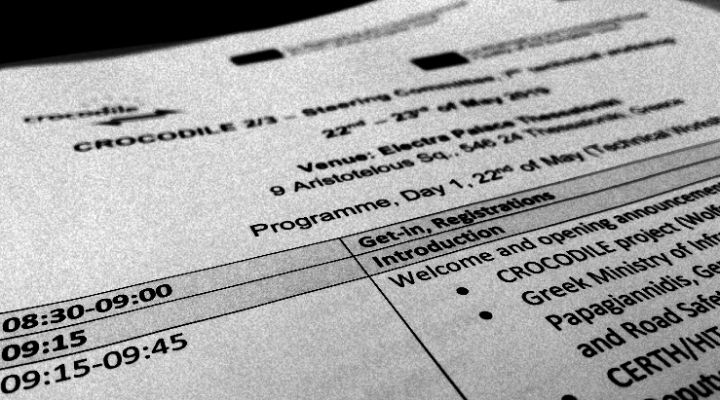 This web site is exclusive responsibility of the author. European Union bears no responsibility for information published here.
This web site is exclusive responsibility of the author. European Union bears no responsibility for information published here.
7th CROCODILE workshop with main focus on traffic management plans
19.09 2019.

The latest technical workshop of the CROCODILE corridor took place in Thessaloniki, Greece on 22nd and 23rd of May. It covered topics like cross-border traffic management plans, Traffic Management 2.0 and the role of digitalisation. This was an opportunity for the CROCODILE corridor partners to introduce their activities among each other and display the possibilities for cooperation and synergies when working on traffic management plans.
The workshop was split into three sessions, lining out the status quo of TMPs, ongoing activities and the digitalisation of TMPs. In the first part, partners talked about details of the design and activation processes as well as possibilities for traffic diversion. Motorway operators cooperate with municipalities for local traffic rerouting and there are some initiatives for cooperation with railway operators for multimodal passenger rerouting. In general, thresholds for activating a TMP should be calculated in such a way that rerouting possibilities can be prioritised in terms of cost-efficiency and implemented accordingly. In this context, it was also emphasised that a broad and concerted appearance towards big private service providers will be a key issue.
The second block included initiatives for the corridor from Budapest to Venice and an overview on the various decision points from where rerouting measures can be initiated in accordance with respective thresholds (shortest and cheapest option). Calculations differ depending on the sections and are also subject to operator-internal processes. There is also the possibility of sharing thresholds via API in order to trigger TMPs across borders more easily.
An interactive part was held in order to answer the following questions:
- Why do we need simple access to TMPs in digital format?
- What are the barriers to offer efficient use of existing transport infrastructure across modes and operators?
- What is the next step for the digitalisation of TMPs?
- Possible solutions/ use cases
In the third session it was emphasised that, when making use of TMPs, strategic decision making tools should be deployed, covering the whole network, thus exceeding the mere operator network. The issue will be to create transparency on technical and operational level. Decisions are made of course within the systems of the operators but in further consequence based on what is displayed in the strategic tool. Again, this should be displayed on a broad concerted basis in order to improve the strategic relevance of operators against private service providers.
A summary and conclusion revealed that there is – unsurprisingly – a general importance of ongoing cooperation due to evolving needs of cross-border traffic & transport. Several TMPs are existing in Europe on different levels (i.e. local/regional, national, cross-border) and processes for activation are defined, but may differ or be adapted depending on operators and environments. When bridging to big players (such as google, TomTom, etc.) it will be important to appear as “Member State collective” to improve perception. Here it will be about achieving a win-win-win use case for operators, providers and end users. Especially concerning the latter, the question is how to set up dynamic and multimodal rerouting that is both feasible and attractive.